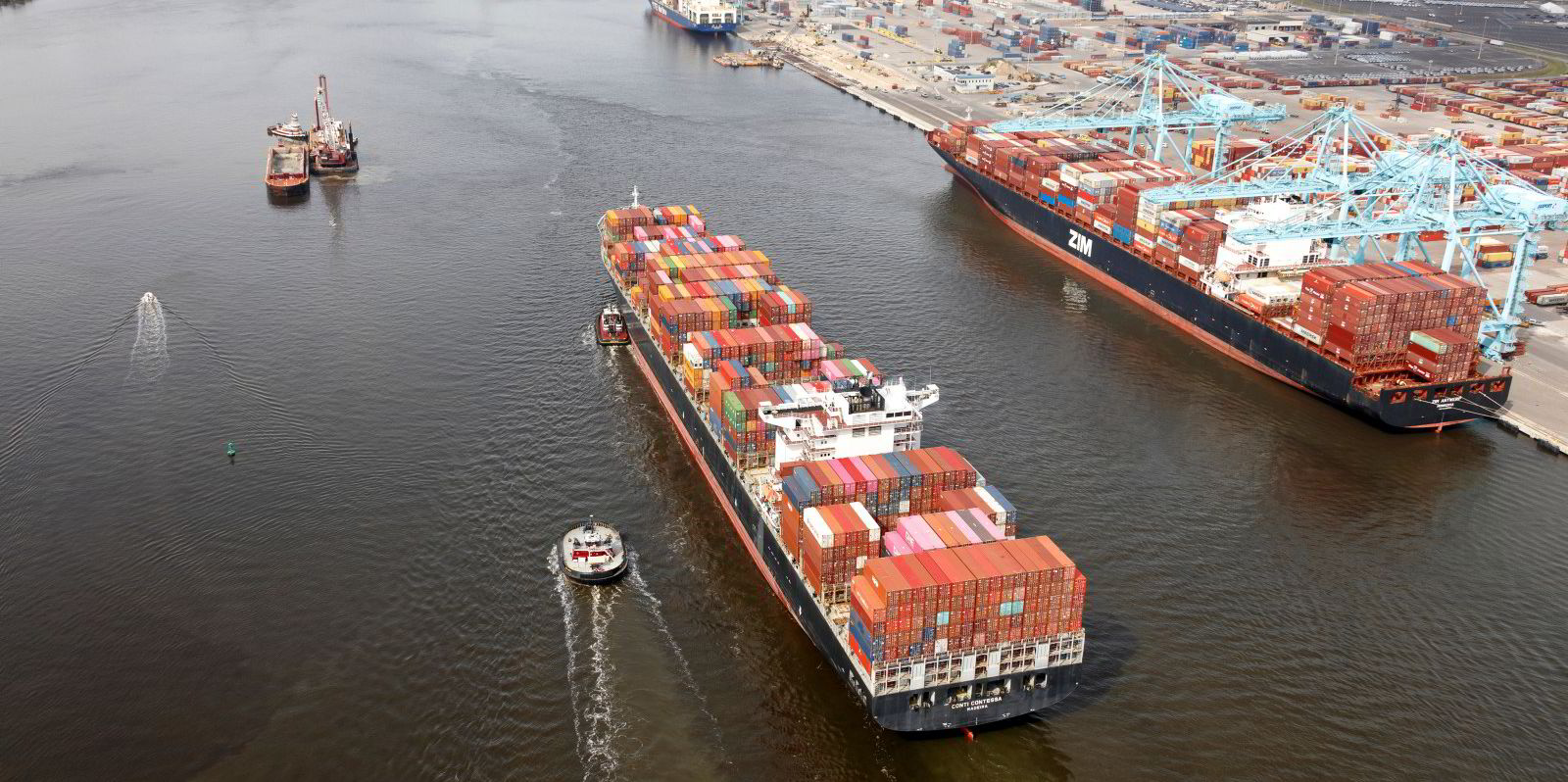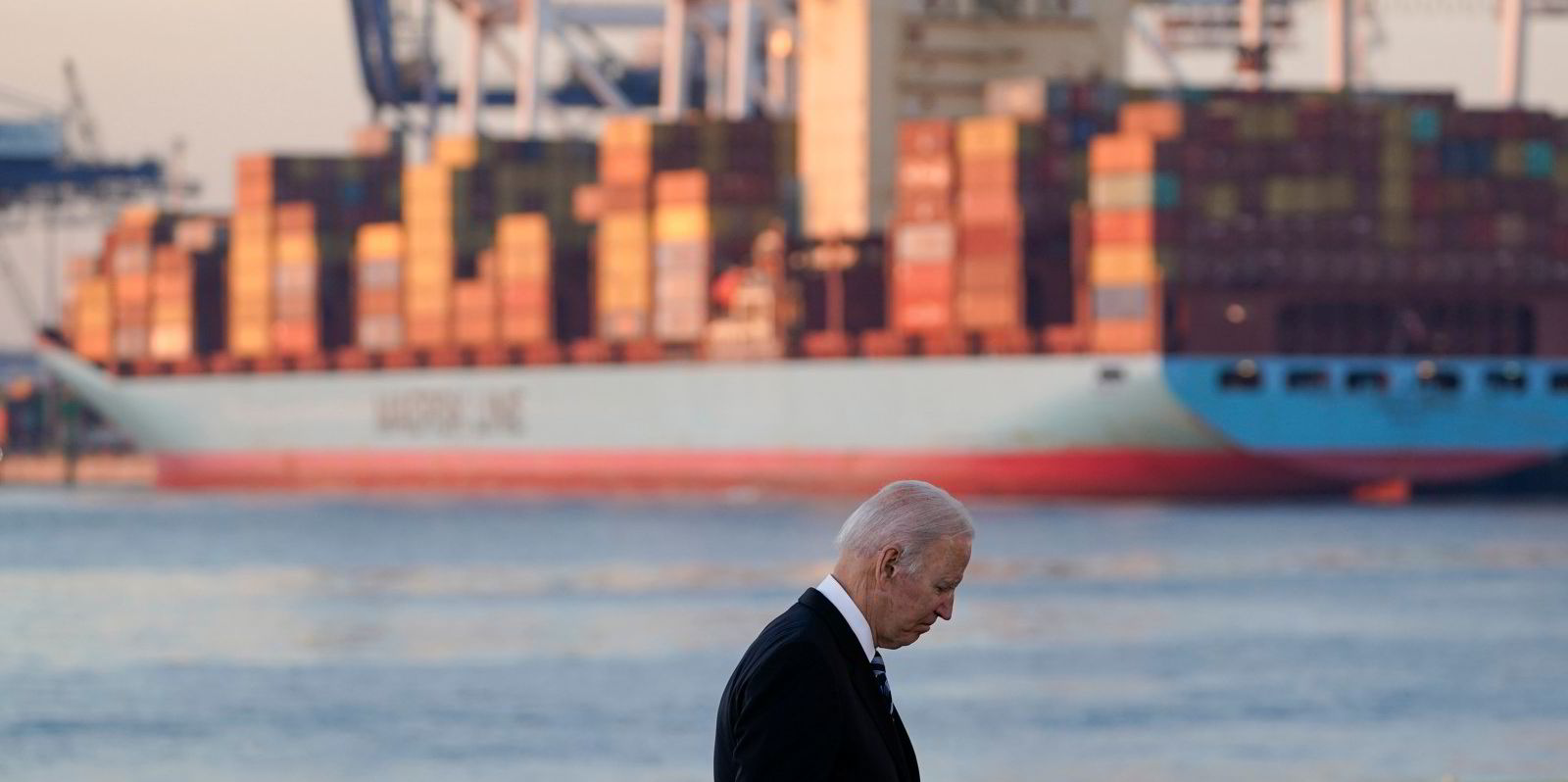The container shipping crunch that has clogged the supply chain and overflowed the coffers of liner operators has decidedly analogue roots: a pandemic that led consumers to buy things rather than services, and an economic rebound that filled the box logistics system beyond its capacity.
But the situation has helped fuel the growth of a digital container freight market that aims to provide shippers with transparency and optionality, even if it can't make their customers' boxes at sea arrive as fast as they once did.
"There are things we can help with and there are things we can't help with, to be perfectly honest," Freightos chief executive Zvi Schreiber told TradeWinds.
His company runs a digital freight booking platform that connects shippers to freight forwarders, which it also connects to the liner operators.
If there are not enough ships, containers or cranes to move cargo quickly from point A to point B, Freightos has no miracle cure to make those assets appear.
"But we can bring a lot more transparency into what's going on, so we can let people know what is the price in real time, we can let people know what are the transit times in practice ... and we can help people look for alternatives," Schreiber said.
Those alternatives include air freight, a rapidly growing offering at Hong Kong-headquartered Freightos.
And, Schreiber said, digital platforms help keep prices dynamic, and the invoices match the price.
Digital freight forwarders and container freight booking platforms have been digging into efforts to find the root causes of the supply chain crunch, to provide customers with optionality to navigate it.
Amid elevated consumer demand, analysis by California's Flexport found that the trade lane between Asia and the US west coast has been particularly affected by supply chain congestion because it is "super seasonal" and focused on a handful of ports.
Chris Rogers, principal supply chain economist at the digital freight forwarder, said that led the company to advise customers to focus on flexibility.
A shipper might normally be focused on moving containers from Yantian in China to Los Angeles, for example, with higher volume in the peak season.
"Actually, think about what you need where and when, and put some flexibility around that," he said. "For example, rather than just sending one big shipping right ahead of peak season, why not break it up a bit?"
Shippers could move cargo by air, by expedited service or to alternative ports.
"As a digital freight forwarder, we can very much facilitate that," Rogers said, although he noted that digital-first customers also have their own systems to take advantage of optionality.
"It's flexibility — leveraging digital tools to be more flexible — that has been one of the secrets to success to those who have been more successful."
The advantage of that digital approach is fuller knowledge of the logistics chain — where things are, where they need to be and where the bottlenecks are, and how to avoid those choke points. Trying to do that over the phone and email is more difficult, Rogers said.
Beacon chief executive Fraser Robinson, whose UK-based company offers a digital supply chain platform integrated with its freight forwarding business, said customers want to know what has happened historically and how that translates into a prediction that allows them to plan for the future.
"We are in an extreme world at the moment, make no mistake," he said, noting that his company cannot put more ships on the water.
"There is no absolute solution for this, but ultimately the only way over time to handle yourself better in this environment is with, quite frankly, better technology and better visibility."
Robinson said that after such a long period of higher than normal demand, there is enough data to paint a picture of the logistics chain.
But it does not provide pinpoint accuracy. Instead, digital firms can show ocean carrier reliability rates or the probability that shipments will arrive on time or will be delayed, to set expectations for customers.
"It might be some information that our customers don't want to hear, but they do want to know," he said.





